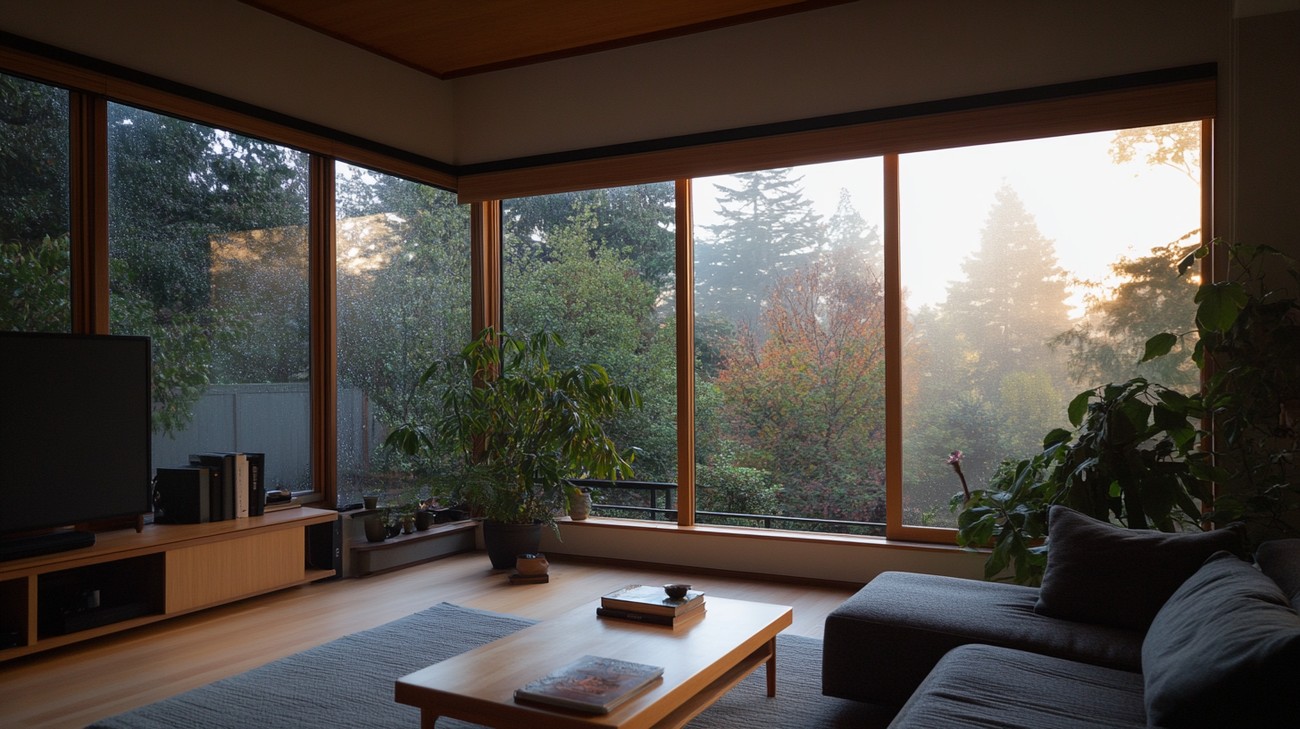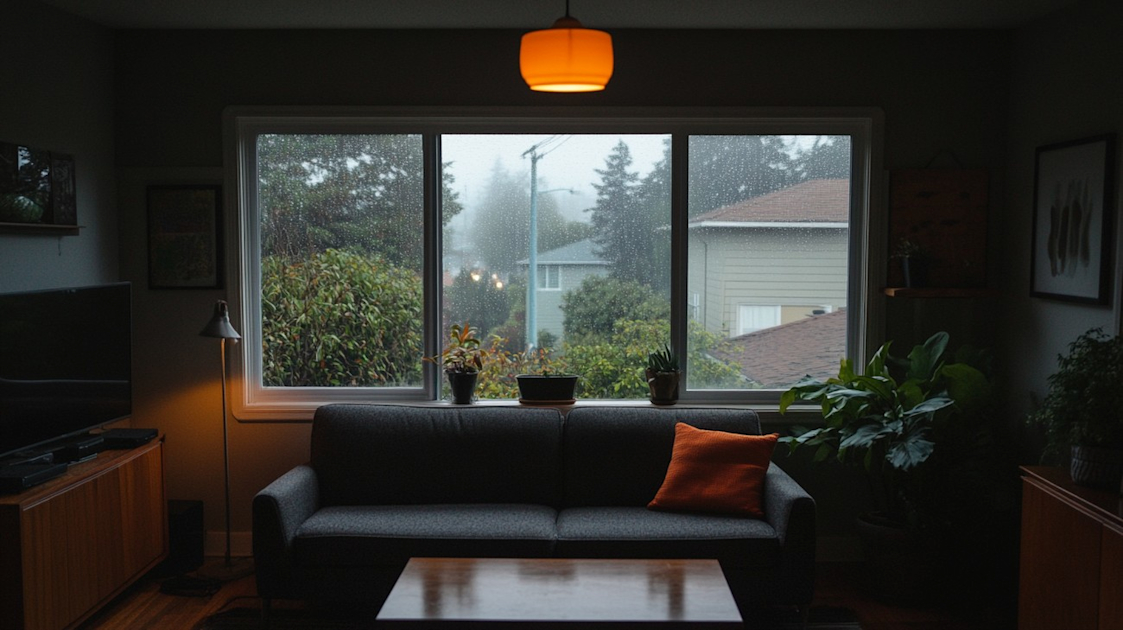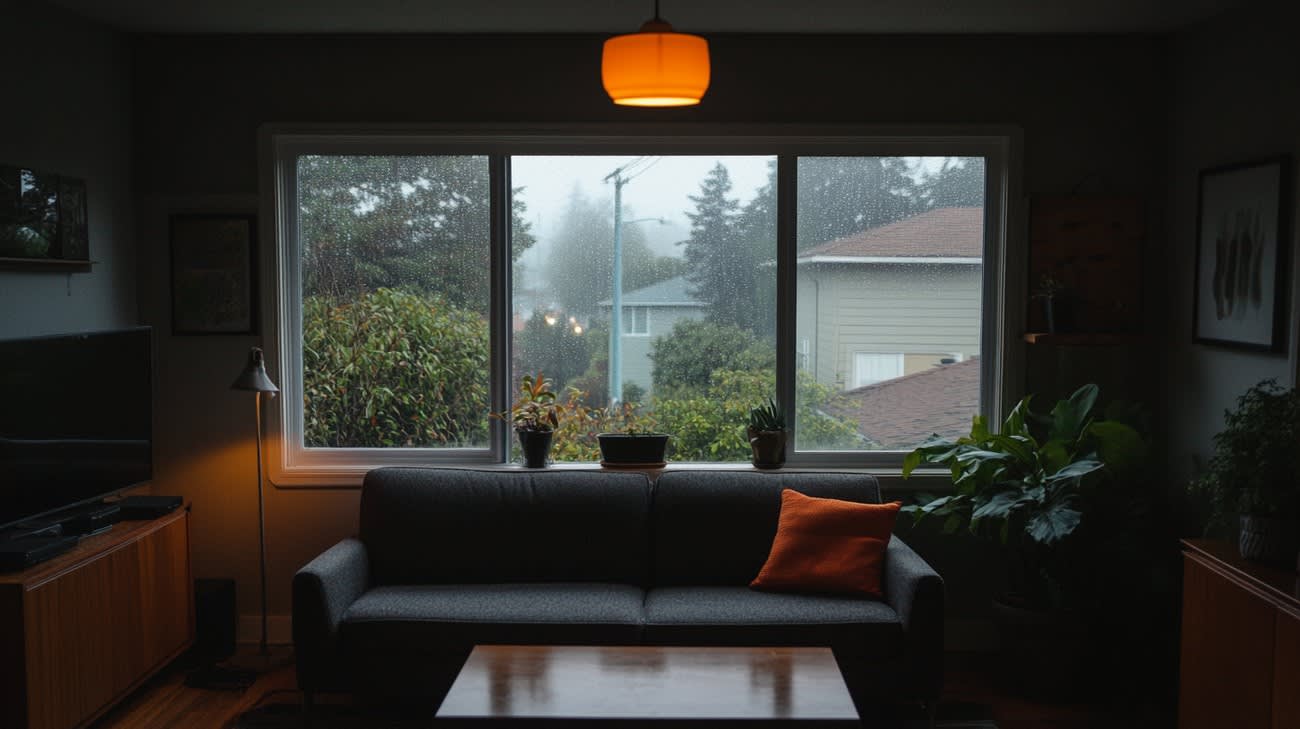Window condensation is a common problem encountered by homeowners, and understanding its causes is essential in devising effective strategies for prevention. If left unchecked, it can lead to peeling paint, mold growth, rotting wood among other complications. This article provides you with comprehensive insights into the causes and prevention of window condensation.
Understanding Window Condensation
Condensation on windows typically forms when warm, moist air comes into contact with a cold surface such as your window glass. The sudden temperature drop causes the air to lose its ability to retain moisture, leading to the formation of water droplets.
Main Causes of Window Condensation
Inadequate Ventilation
Homes that are poorly ventilated trap humidity, causing an increase in condensation. Activities such as cooking, showering, drying clothes indoors, and even breathing release moisture into the air leading to a buildup of humidity in poorly ventilated homes.
Extreme Weather Conditions
During the colder months, the difference between the indoor and outdoor temperatures increases, leading to an increase in window condensation.
High Indoor Humidity Levels
If your home retains high levels of humidity, you are likely to experience a problem with window condensation. Sources of humidity include houseplants, pets, and running appliances like dishwashers and washing machines.
Strategies for Preventing Window Condensation
Getting rid of window condensation entails reducing the level of humidity and improving ventilation in your home. Below are some effective ways to prevent window condensation:
Proper Ventilation
Ensure that your home is adequately ventilated especially during activities that generate moisture such as cooking and showering. Here are some simple ways to improve home ventilation:
- Using exhaust fans in your kitchen and bathroom
- Opening windows regularly to allow fresh air in
- Avoiding drying clothes indoors
Use of Dehumidifiers
Dehumidifiers can help in reducing the level of humidity in your home. This is particularly effective in areas with high moisture levels such as bathrooms and kitchens.
Double Glazing
Installing double-glazed windows is another excellent way to prevent condensation. By creating a barrier between the indoors and outdoors, double glazing tends to lower the chance of condensation since the inner pane does not get as cold as the outer pane.
Use of Moisture Absorbers
Moisture absorbers or desiccants can be used in your home to reduce the amount of moisture in the air. This is a convenient solution for people living in particularly humid climates.

Frequently Asked Questions about Window Condensation Causes And Prevention
Why does condensation form on the inside of windows?
Condensation forms on the inside of windows when the exterior temperature is significantly lower compared to the interior temperature. This creates a cold surface inside where the moist air can condense, causing droplets to form. This condition is often aggravated if there is insufficient air circulation near the windows.
Why is window condensation a problem?
Window condensation, if not addressed in a timely manner, can lead to numerous problems. It can lead to wood rot in window frames, dampness on walls, and can even cause mold and mildew to develop, which can be harmful for those with allergies or respiratory issues.
How can I prevent condensation on my windows?
To prevent condensation on windows, ensure your home is well-ventilated, especially in high-moisture areas like the kitchen and bathroom. Install fans or vents, or keep windows slightly open to allow damp air to escape. Also, maintaining a consistent temperature in your home can help. It's also advised to use dehumidifiers in high humidity times and places.
Does double glazing prevent window condensation?
Yes, double-glazing windows are an effective method for preventing window condensation. It works by trapping a layer of air or inert gas between the two panes of glass which significantly reduces thermal transfer and prevents the interior glass from getting cold enough for condensation to form. However, it’s important to note that double-glazing will only prevent interior window condensation.
Are there certain times of year where window condensation is more likely?
Yes, window condensation is especially prevalent during colder months. When outdoor temperatures drop, the potential for condensation increases due to the differential between indoor and outdoor temperatures. However, excessive indoor humidity can also cause window condensation in warmer months.
Can weatherstripping help in preventing window condensation?
Weatherstripping can help reduce window condensation by improving the insulation around your windows, making the interior surfaces less likely to cool down enough to cause condensation. Weatherstripping creates a seal that blocks cold outside air from entering and warm inside air from escaping.
Do insulating window films help to prevent window condensation?
Insulating window films can indeed help prevent window condensation. They add an extra layer of insulation to your windows, which can reduce the temperature difference between the inside and outside of the window. This helps to reduce the chances of condensation forming.
What role does a dehumidifier play in preventing window condensation?
Dehumidifiers remove excess moisture from the air, reducing the humidity level indoors. With less moisture in the air, the likelihood of it condensing on the cold window surface decreases, hence effectively preventing window condensation. It's particularly beneficial in rooms with a lot of moisture, such as bathrooms and kitchens.
Is window condensation a sign that my windows need replacing?
Window condensation is not always a sign that your windows need to be replaced. Sometimes, it just means that the humidity in your home is too high and needs to be reduced. However, if you notice condensation between the glass layers of a double- or triple-pane window, it could mean that the seal has failed and the window may need to be replaced.

Cons of Window Condensation
Damages to the House Structure
Destruction of the Window Frame
Over time, regularly occurring condensation on windows can cause significant damage to the window frames. If the frames are made of wood, the moisture can soak into the wood and cause it to rot. This is more than just a cosmetic issue - a rotting window frame can compromise the structural integrity of the window, possibly leading to the window being unable to serve its primary purpose of protection.
Damages to the Wall and Paint
Sometimes, the moisture from condensation on windows may trickle down and soak the surrounding walls. When this happens, it creates a favorable environment for the growth of destructive molds and mildews. Besides causing health issues, these bio-contaminants can degrade paint and lead to unsightly patches on the wall.
Health Hazards
Breeding Ground for Molds
Condensation creates a damp environment, which is perfect for mold growth. Molds can cause health problems for people living in the house, including allergic reactions and respiratory problems. Some types of mold can even be toxic.
Energy Efficiency
Condensation on windows indicates a loss of heat. This means your heater or air conditioner has to work harder to maintain the temperature in your home, which can lead to higher energy bills.
Pros of Window Condensation Prevention
Increasing the Lifespan of Your Windows
Preventing condensation will keep your windows in better condition for a longer period. It reduces the risk of damage caused by excess moisture, such as rotting frames and peeling paint, potentially saving you money in repair costs in the long run.
Enhances Your Health
Preventing condensation can help reduce mold growth in your home. Not only will this make your home more pleasant to live in, but it can also help to reduce the risk of health problems related to mold exposure.
Maintenance of Property Aesthetics
By preventing condensation on your windows, the aesthetics of your property will be upheld. No one likes looking at or through water-stained windows. Plus, avoidance of the mold and mildew that window condensation can bring helps maintain the aesthetics of your interior space.
Improved Energy Efficiency
Preventing window condensation increases the energy efficiency of your home. Without condensation, your heating and cooling systems should function more efficiently, which could reduce your energy bills.
Common Window Condensation Causes
Indoor Humidity
If the air in your home has high humidity levels, it can cause condensation on your windows. Everyday activities like cooking, showering, and even breathing can increase the humidity in your home.
Poor Ventilation
In a poorly ventilated home, excess moisture can't escape. Instead, it may condense on the cooler surfaces of the windows. Hence, ensuring that your home is well ventilated can help to reduce condensation.
Temperature Differentials
When the interior temperature of a house is very different from the exterior temperature, it can lead to the formation of condensation on windows. This is why window condensation is often seen first thing in the morning, especially during winter or colder months.
Window Condensation Prevention Methods
Use of Dehumidifiers
Dehumidifiers can help to reduce the humidity levels in your home, thereby preventing the condensation on the windows.
Ventilation
Improving the ventilation in your home can help to reduce condensation. This might involve installing extractor fans, especially in areas such as the kitchen and bathroom where a lot of moisture is produced.
Better Insulation
Installing double-glazing or even triple-glazing can help to keep the inside pane of glass warmer, reducing the likelihood of condensation.
Using Moisture Eliminating Products
There are many products available that can help to absorb excess moisture from the air in your home. These might include moisture-absorbing crystals or specialized paints and primers.
By acknowledging the harmful effects of window condensation and taking steps to prevent it, homeowners can improve the quality of their living environment, besides preserving the health of their building structures.

Myths and Misconceptions surrounding Window Condensation Causes and Prevention
Dealing with window condensation can be baffling, especially when so many misconceptions are permeating all around. To tackle this problem effectively, however, it’s essential to debunk these myths and misconceptions and work towards understanding the true nature and prevention ardencies of window condensation.
Myth 1: Indoor Plants Promote Window Condensation
Misconception
Some people hold the belief that indoor plants contribute significantly to window condensation. Their argument is based on the fact that plants release water into the air – a process known as transpiration.
Reality
While it’s correct that indoor plants release some moisture, the quantity is trivial and doesn’t contribute significantly to window condensation. Domestically, the real causes of high indoor humidity levels are more commonly due to cooking, showering, or drying clothes indoors.
Myth 2: Condensation Is a Winter Problem
Misconception
Many people think that condensation is strictly a winter problem, largely because it's during colder months that they notice water droplets accumulate on their windows.
Reality
In truth, condensation formations are not limited to the cold seasons. While it's true that extreme contrasts between indoor and outdoor temperatures during winters result in visible window condensation, high indoor humidity can lead to condensation during summers too.
Myth 3: Window Condensation Means the Windows are Faulty
Misconception
There's a popular belief that if your windows are condensing, they are defective and need to be replaced.
Reality
Window condensation is typically a symptom, not the root cause of moisture issues in your home. It's more indicative of high humidity levels within your space than faulty windows. It's important to understand that condensation forms when warmer, moisture-laden air hits a colder surface– in this case, the window.
Myth 4: Using a Dehumidifier is the Ultimate Solution
Misconception
People tend to depend on dehumidifiers as the absolute solution to prevent window condensation, thinking that it will solve the problem outright.
Reality
While using a dehumidifier can help reduce the high humidity levels in your home, thereby mitigating window condensation, it isn’t a silver bullet. Other measures, such as improving ventilation, reducing excessive indoor moisture sources, and insulating windows, are equally important.
Myth 5: New Double-Glazed Windows Will Eliminate Condensation
Misconception
Often, you'll hear that installing new double-glazed windows will eliminate window condensation problems.
Reality
While double-glazing can definitely improve insulation and hence reduce condensation, it’s not a full-proof solution. This is because the fundamental issue causing condensation is the high indoor humidity faced by many homes. In some cases, after double-glazed windows are installed, condensation may shift from the windows to other colder surfaces like external walls.
Myth 6: Window Condensation is Harmless
Misconception
There's a common myth that window condensation is a mere visual annoyance and doesn't cause any real harm.
Reality
If left unchecked, constant window condensation can lead to various problems, including mold growth, decay of window frames, or even damage to surrounding pool and plaster. Furthermore, consistent high humidity levels can worsen allergies and respiratory conditions.
In conclusion, it's essential to debunk these myths and misconceptions about window condensation causes and prevention to effectively deal with the issue. The balance of proper ventilation, insulation, and humidity control can help minimize the potential complications caused by window condensation.
Summary
The root issues of window condensation, like temperature fluctuation and excess humidity, may seem like minor inconveniences. However, left unchecked, they can lead to serious structural damage, health problems caused by mold growth, and overall discomfort for residents. Being well-informed about window condensation causes and prevention gives the power to handle issues promptly, saving time and money in the long run.
Preventing window condensation might sound like a chore, but it's actually quite simple and straightforward. All it requires is a keen eye to spot issues early on, and the right tactics to deal with them. These include maintaining the right indoor temperature, using dehumidifiers, and investing in well-insulated windows. With minor changes in lifestyle and home care, window condensation issues can be nipped in the bud.
Lastly, remember nobody should feel overwhelmed by window condensation. It's a common issue that many homeowners face, especially in areas with cold winters or high humidity level. The key is early detection, immediate action, and continuous prevention. After all, a dry, condensation-free window equals a comfortable, healthy home. Knowledge is certainly power when it comes to battling window condensation causes and prevention.
About Bay Area Siding Company
Bay Area Siding Company, based in the vibrant heart of Bay Area, CA, is a dedicated and passionate team of professionals that has been providing top-quality siding solutions to the community for years. We take pride in being experts in the siding industry, catering to both residential and commercial clients. Our team's commitment to superior workmanship and excellent customer service has earned us reputation and trust. We specialize in all types of siding products, ensuring our clients have incredible variety to meet their unique needs and style preferences. From installation to repair and maintenance, Bay Area Siding Company has got all your siding needs covered!
















